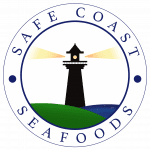There are many key decisions made around the Dungeness Crab commercial fishery, including starting at the right time. For the past few years, delayed starts have become the norm. Delayed seasons are difficult for fishing families, communities, and businesses.
Managing parties seek to increase fishing opportunities and support businesses, but it is imperative that they strike the right balance between protecting humpback whales and protecting commercial Dungeness Crab fishing. To do this, they look at the 3 requirements below.
Low Domoic Acid
Found in crab and other crustaceans, Domoic Acid has been closely studied by the scientific community. While consuming Domoic Acid in large amounts can be harmful, the FDA sets strict standards to ensure that the crab you enjoy throughout the season contains safe levels.
The California Department of Public Health (CDPH) works with the California Department of Fish and Wildlife (CDFW) to set up Domoic Acid testing sites. If levels are too high (>30 ppm in crab viscera) before the season, it is either delayed or halted until they go back down.
Low Risk of Entangling Actionable Species
Crab fishing requires equipment, like rope, which can entangle other ocean species. “Actionable Species” – Humpback Whales, Blue Whales, and California Leatherback Sea Turtles – are of particular concern when it comes to entanglement in commercial fishing gear.
The California Department of Fish and Wildlife (CDFW) monitors the migration patterns of these species and regulates the start of the season accordingly. If there are too many of a single species within a fishing zone, the season is delayed or put on hold for that zone. Depending on the risk, the season may continue with requirements that fleets take special measures, like using alternate equipment or limiting the depth of their pots.
High Meat Quality
This requirement ensures that the crab contains a substantial amount of meat. Meat quality is only measured above the Sonoma/Mendocino county line, so San Francisco County and San Mateo County are excluded from this requirement. To measure meat quality, a sample of crab is weighed live and whole. The crab is then cooked and its meat is taken out, treated with brine, drained, and weighed again.
The meat recovery rate is the weight of the recovered meat as a percentage of the whole crab weight. For the Northern California Season to start, the rate needs to be at least 24% at all 3 port sample sites
Conclusion
When these three requirements are met, the director of the CDFW opens the season. If at any time during the season, there are reports of entanglement fishermen are asked to remove fishing gear until further notice.
Deciding the opening date of the commercial Dungeness Crab season in California is full of tension between satisfying consumers, protecting whales, and providing the fishing industry with economic opportunity. Thankfully, all groups have representation in councils that influence decisions to begin fishing when it’s clear or start removing fishing gear when risks are presented. At the end of the day, these regulations are in place to ensure that people safely enjoy Dungeness Crab for many years to come.
Where to Get Dungeness Crab
Located right on Pier 45, Safe Coast Seafoods receives crab directly from local fleets and offers it to seafood markets and seafood distributors.
Our experience allows us to keep and process crab with mastery. This way, by the time consumers dig into their Dungeness, it tastes like it was caught the same day (in fact, there’s a chance it was!). If you are an grocer or restaurant, search for certified seafood distributors.
Pucci Foods, a premier distributor in the Safe Coast Seafood network, is a 100 year old seafood and meat distributor known for service, quality, and sustainability. Located in Hayward, Pucci Foods is in a great position to receive the ocean’s finest from the best suppliers and distribute it to several counties around the Bay.
Information provided by The California Department of Fish and Wildlife.
